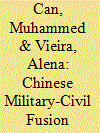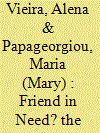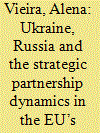| Srl | Item |
| 1 |
ID:
187026


|
|
|
|
|
| Summary/Abstract |
An analysis of the Chinese military-civil fusion strategy through a neoclassical realist and state action theory perspective highlights that the advent of emerging technologies has opened up an unprecedented opportunity for states to amplify the extraction and mobilisation of resources, conducive to maintaining and increasing their military and economic power in global politics. Underpinned by increasing cooperation between the People’s Liberation Army and private companies as well as state-owned enterprises, the Chinese military-civil fusion strategy can be viewed as a comprehensive strategy of mobilisation and extraction (actively relying on state-driven technology advancement) that has especially drawn upon technology transfer and talent recruitment from abroad. In this regard, China has acted in line with the premises of state action theory.
|
|
|
|
|
|
|
|
|
|
|
|
|
|
|
|
| 2 |
ID:
182573


|
|
|
|
|
| Summary/Abstract |
The paper focuses on the COVID-19 as a stress test to the Sino-Russian strategic partnership: has it driven Russia and China closer together, farther apart, or made no difference? Employing content analysis of official Russian discourse as expressed by the Kremlin, the Government, and the Ministry of Foreign Affairs (MFA), both via their official web pages (104 online publications) and Twitter accounts (260 tweets), this study focuses on the Russian twiplomacy as a more suitable mean to reflect the real-time changes of an evolving crisis. The analysis demonstrates that the Sino-Russian relationship extends beyond the “axis of convenience.” It does not, however, correspond to the support expected from a consolidated (comprehensive) strategic partnership, nor does it achieve the intensity of soft balancing (vis-à-vis the USA) in a particularly polarized and politicized international context.
|
|
|
|
|
|
|
|
|
|
|
|
|
|
|
|
| 3 |
ID:
145777


|
|
|
|
|
| Summary/Abstract |
The present contribution explores the changing relationship between the European Union (EU) and the two largest countries in its eastern neighbourhood, namely Ukraine and Russia, between 1991 and 2014. Taking the differential between the existence of the EU Strategic Partnership (SP) with Russia and the absence of such an arrangement in the relationship with Ukraine as a point of departure, it investigates how the EU has dealt with different aspirations and challenges stemming from its two largest eastern neighbours. Adopting the Social Identity Theory perspective, the contribution analyses the interrelationship between the evolution of the EU’s SP approach towards the eastern neighbours and the development of (particular dimensions of) the EU’s identity. It demonstrates how the process of categorization relating to the ideational ‘self’, ‘we’ and ‘other’ took place; and how only the EU’s relationship with Russia and not that with Ukraine has accumulated the discursive markers of a strategic partnership. The contribution, furthermore, analyses the challenges to the EU changing approach stemming from the 2013–2014 Ukraine crisis.
|
|
|
|
|
|
|
|
|
|
|
|
|
|
|
|